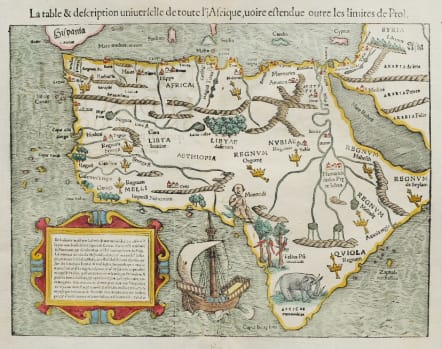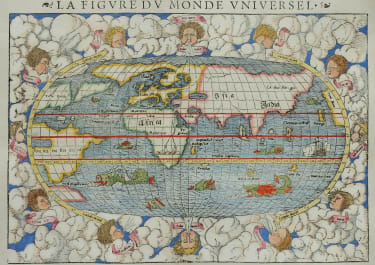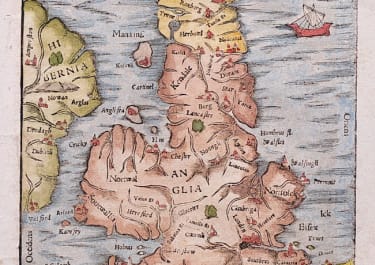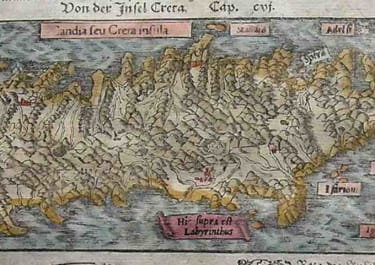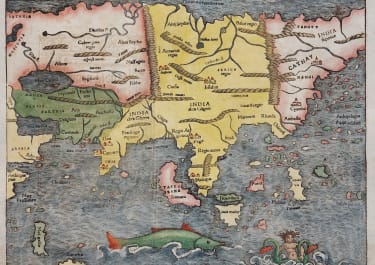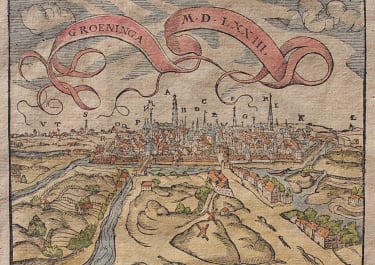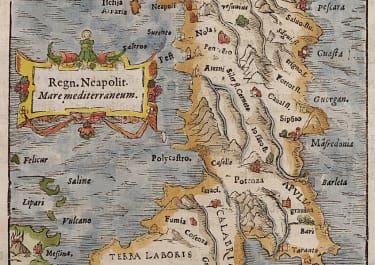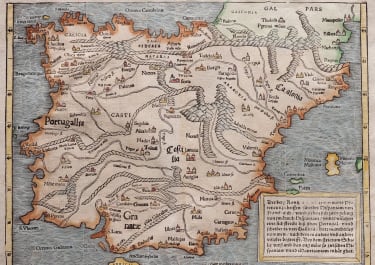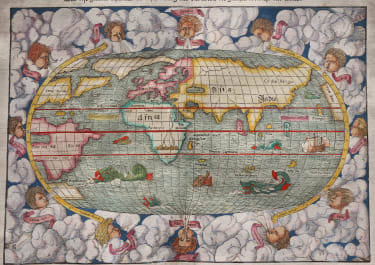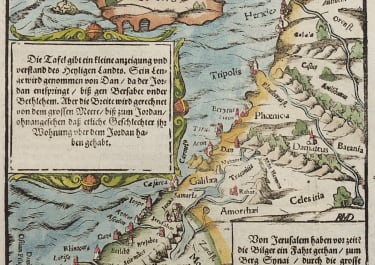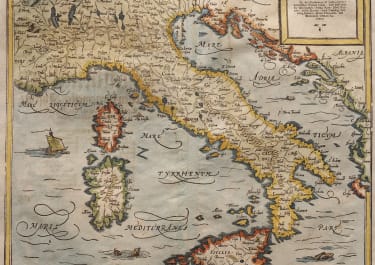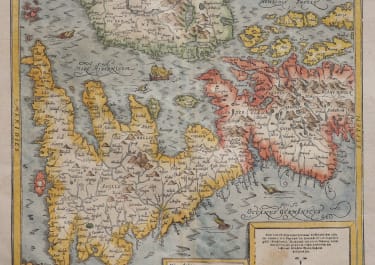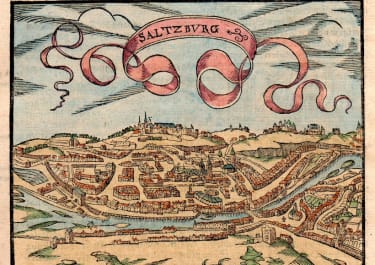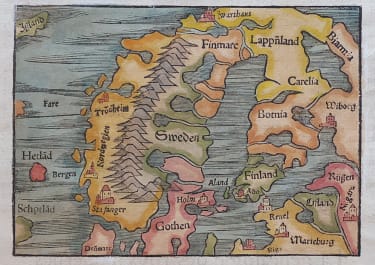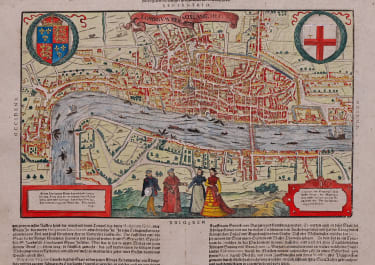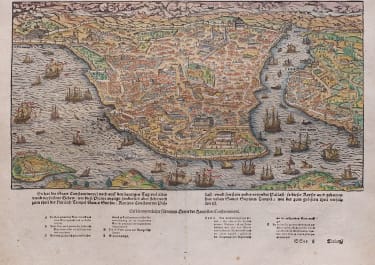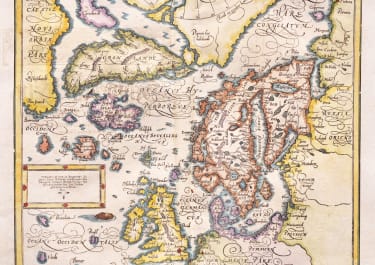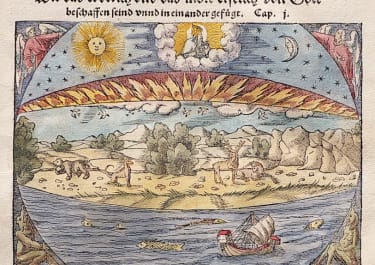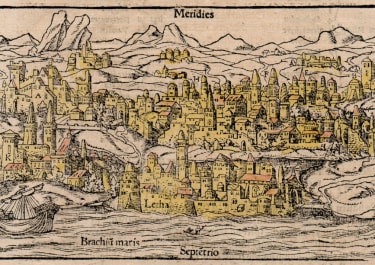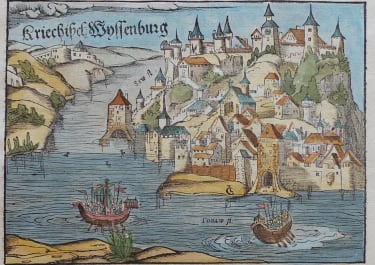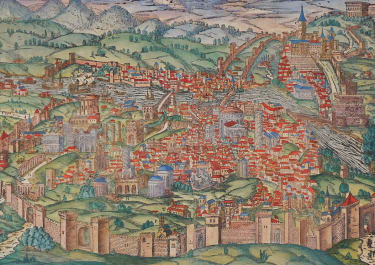LA TABLE & DESCRIPTION UNIVERSELLE DE TOUTE L'AFRIQUE
£1200
Full title La table & description universelle de toute l'Afrique, voire estendu outre les limites de Ptol.
Superb colour example.
An early edition of Munster's famous map of Africa, the first atlas map to show the whole continent.
A one-eyed giant is seated over Nigeria, representing the mythical tribe of the 'Monoculi', and an elephant fills southern Africa.
Also marked are several kingdoms, including that of Prester John, and 'Meroë', the mythical tombs of the Nubian Kings.
The large text box next to a large galleon contains a guide for sailing from Cadiz to Calecut in India.
Excellent hand colour
Mint condition
Ref BETZ 3.
code : M5154
Cartographer : Sebastian Munster
Date : 1550 Basel
Size : 27*35 cms sheet 32*42 cms
availability : Available
Price : £1200
Originally a scholar studying Hebrew, Greek and mathematics, Sebastian Munster (1489-1552) eventually specialised in mathematical geography and cartography. It was this double ability - as a classicist and mathematician - that was to prove invaluable when Munster set himself to preparing new editions of Solinus’ “Memorabilia” and Mela’s “De Situ Orbis”, two classical descriptive geographies containing maps, and his own two greatest works, the “Geographia” and “Cosmographia”. These reflect the widespread interest in classical texts, which were being rediscovered in the fifteenth century, and being disseminated in the later fifteenth and sixteenth century, through the new medium of printing.
The “Geographia” was a translation of Ptolemy’s landmark geographical text, compiled in about 150 AD., illustrated with maps based on Ptolemy’s calculations, but also, in recognition of the increased geographical awareness, contains a section of modern maps. In the first edition of the “Geographia”, Munster included 27 ancient Ptolemaic maps and 21 modern maps, printed from woodblocks. Subsequent editions of the “Cosmographia” were to contain a vast number of maps and plans.
One consequence of Munster’s work was the impetus it gave to regional mapping of Germany, but Munster was also the first cartographer to produce a set of maps of the four continents on separate maps. Most importantly, through his books (the “Geographia” and “Cosmographia” alone ran to over forty editions in six languages), Munster was responsible for diffusing the most up-to-date geographical information throughout Europe.

